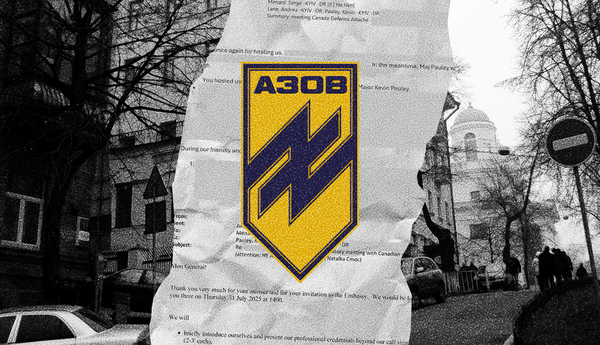The Ontario NDP has updated its housing platform for the upcoming provincial election.
The party released its full election platform on Apr. 25, which cited a 2020 housing policy document called “Homes You Can Afford.” As we reported last month, the ONDP’s election platform did not mention key policy pledges from that document.
An ONDP spokesperson subsequently reached out to The Maple explaining that the party had “officially re-released the Homes You Can Afford platform as a campaign commitment, with a few key improvements.”
“This is fully and officially, in every way, a part of our platform,” the spokesperson stressed.
The ONDP’s most significant addition to their housing platform is a promise to build 250,000 new “affordable and non-market rental homes.”
Of these, the ONDP promises that “at least” 150,000 will charge below-market rents and 100,000 will be “deeply-affordable” homes. The updated platform maintains the ONDP’s commitment to building 60,000 new supportive housing units for those living with mental health and addictions challenges.
The ONDP’s platform does not yet include costing.
A.J. Withers, a housing activist and member of the steering committee of the Shelter and Housing Network, a Toronto-based housing justice organization, is frustrated that the ONDP’s platform ignores key elements of the housing crisis: The financialization of housing and the need to raise social assistance rates to a level that enables people to actually afford rent.
“The problem right now is that we’re in this really severe housing crisis, and the reason we have this severe housing crisis is not because of a lack of housing supply, it’s because of capitalism and because of the financialized housing market,” Withers said.
“If we have a government that refuses to acknowledge the core problem with the housing market, we’re not going to have appropriate solutions.”
Withers noted that various government definitions of “affordable” housing are not truly affordable for those on low incomes. For example, the Canadian Mortgage and Housing Corporation (CMHC) defines “affordable” rent as costing no more than one-third of a region’s median household income, a figure that works out to more than $2,000 per month in some places.
Market rental costs, meanwhile, are far out of reach for many. According to Rentals.ca, average rent for a one-bedroom apartment in Toronto was $2,023 per month in April, making that city the most expensive in Canada behind Vancouver, B.C.
Average rents in other Ontario cities such as Burlington, Oakville, Etobicoke, Mississauga, Barrie and Guelph all rank as the top 10 most expensive in Canada.
The updated ONDP housing platform promises to build "at least 1.5 million new market and non-market homes over the next decade.”
To oversee the construction of affordable housing, the ONDP promises to create a new public agency called Housing Ontario, that will, as they explain, “build affordable homes that are operated by public, non-profit and co-op agencies, not greedy speculators.”
On May 9, the Ontario Liberals released their election platform which also elaborated some of their housing promises.
Like the ONDP, the Liberals have promised to create an agency to build new housing, called the Ontario Home Building Corporation (OHBC). However, the Liberals’ plan for the agency was announced separately, and is not mentioned in their main platform.
The OHBC will operate as a financier to build 1.5 million new residences – the same target set by the ONDP. The Liberals promise that only first-time homebuyers will be allowed to purchase properties sold by the OHBC.
Withers called the Liberal and ONDP platforms “superficial” and “virtually identical.”
They argue that while deeply affordable homes are critically necessary, simply adding housing supply isn’t going to fix the housing crisis.
According to the most recently available data from Statistics Canada, there are approximately 1.3 million vacant properties across Canada. A March report by real estate data analyst Point2 found that the number of vacant properties dropped slightly in 2021, but remained high.
But neither the Liberals nor the ONDP are going hard enough after owners who are sitting on vacant properties, said Withers.
Both parties propose new “use it or lose it” fees for developers and speculators who sit on vacant properties or lands. The ONDP calls it a “use-it-or-lose” tax, the Liberals call it a “use it or lose it” levy, and neither is punitive enough to force any significant change, argued Withers.
The similarities in the two party platforms aren’t a coincidence. Even the governing Progressive Conservatives have set themselves the target of 1.5 million new homes to be built within the next decade.
That figure was a recommendation made by Ontario’s Housing Affordability Task Force (OHATF), which was chaired by Jake Lawrence, an executive with Scotiabank.
Nearly every other member of the task force came from housing development or home financing backgrounds, and coming up with “affordable” housing solutions beyond increasing market housing supply was not part of their mandate.
The Toronto Star reported last week that PC spokesperson Ivana Yelich said her party will be following the recommendations from the task force as they develop their plan to tackle housing affordability.
OHATF’s report, released in February, made 55 recommendations that ranged from reducing municipal regulations to promoting skilled trades to ensure that there is enough qualified workers to build new units.
In his letter to the minister in the task force report, Lawrence said the interventions they heard clustered around a handful of core themes:
“More housing density across the province; end exclusionary municipal rules that block or delay new housing; depoliticize the housing approvals process, prevent abuse of the housing appeals system; financial support to municipalities that build more housing.”
These themes appear in all of the main parties’ housing platforms and promises.
But dealing with issues like supply are only one side of the ledger when it comes to housing. Because housing has been commodified, said Withers, it is becoming even more impossible for many people to be able to pay for housing.
This problem isn’t adequately addressed by any party’s policy, they pointed out, and each of the three parties who have been in government in the past two decades have either frozen or cut social assistance rates, exacerbating access to housing.
“Key to a housing platform actually is income,” said Withers. The Liberals and ONDP are both promising to raise ODSP rates by 20 per cent, and the PCs are offering a much lower five per cent raise.
While any amount will help people, said Withers, even 20 per cent is not enough to address housing affordability. “It guarantees that if you’re on welfare and you become homeless, the chances of being housed again are very slim because you can’t afford to rent something.”
Nora Loreto is The Maple's Ontario election reporter. She is the author of Spin Doctors: How Media and Politicians Misdiagnosed the COVID-19 Pandemic.







